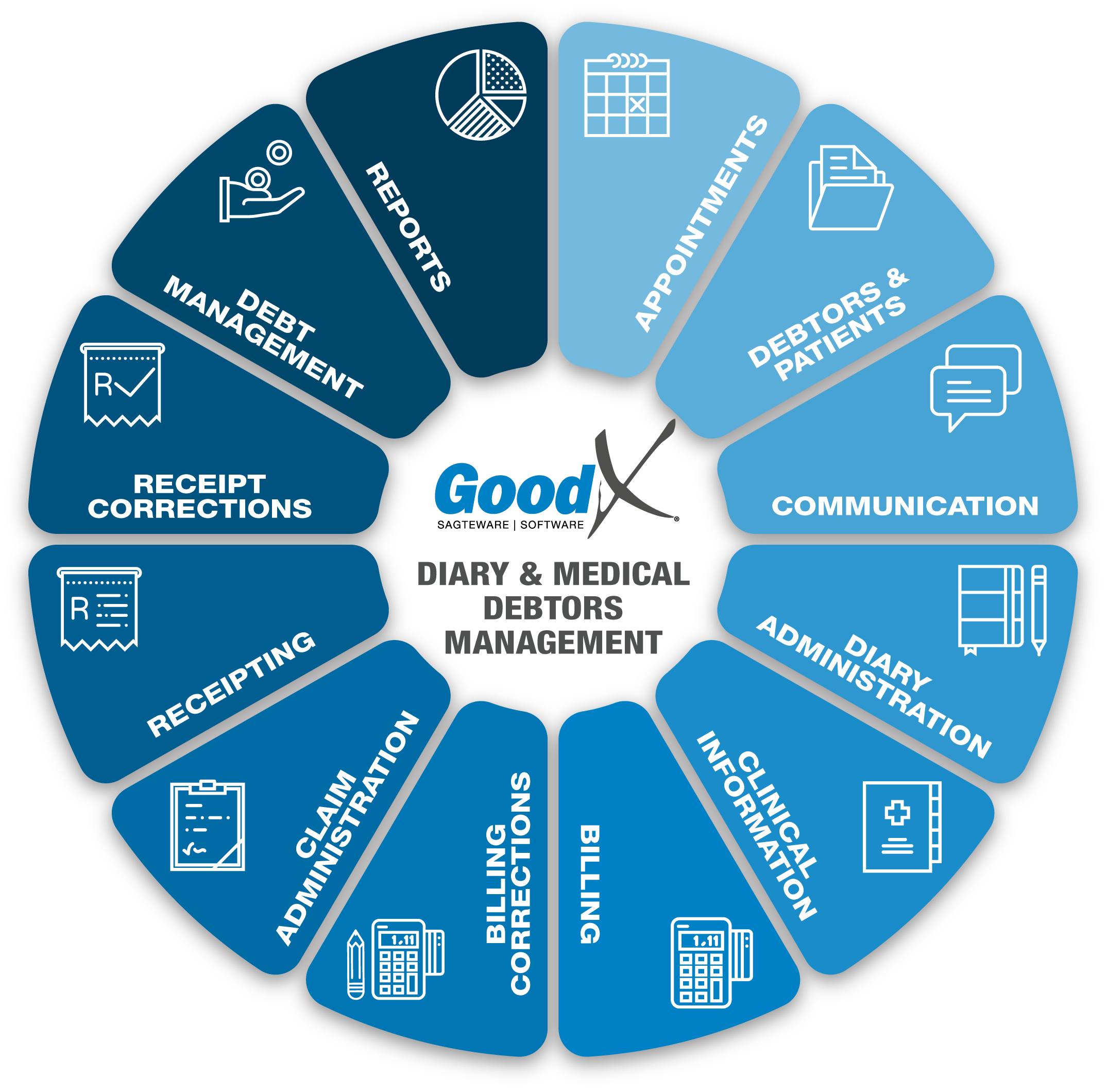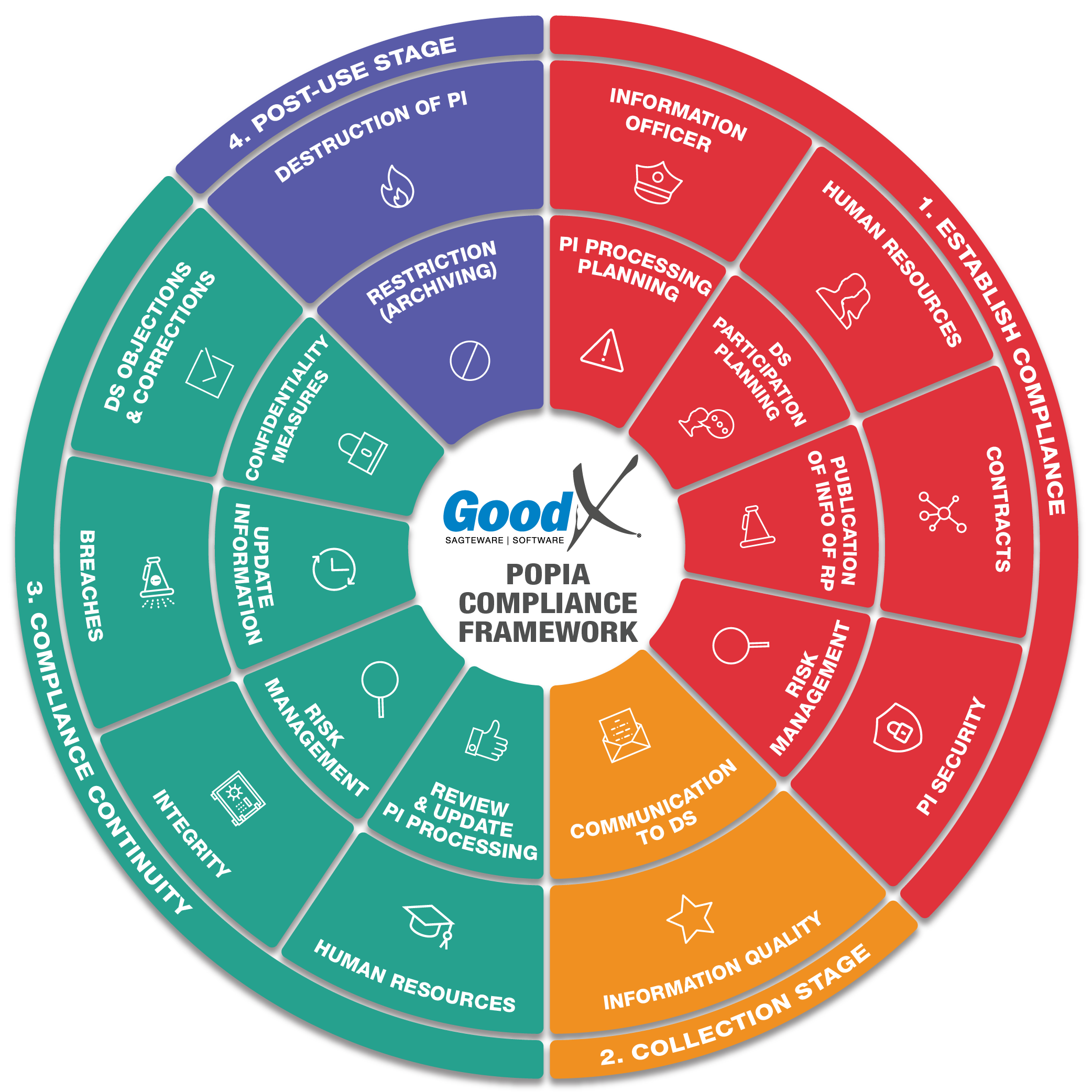Best Practice Guidelines: Healthcare Practice Management & POPIA Compliance Framework
Best Practice Guidelines: Healthcare Practice Management
&
POPIA Compliance Framework


Copyright © 2021 GoodX Software. All rights reserved.
GoodX online Learning Centre
learning.goodx.co.za
14. Debt Management: Roles, Purpose & Summary of Phases
14.3. Phase 3: Account Clean-up
The Account Clean-up Phase aims to clear all the clutter and ensure that no unnecessary communication is sent to medical debtors. The following processes are used to pave the way for an optimal debt collection process:
- Processing Journals
- Archiving settled accounts
- Hiding zero balances on accounts.
1. Journals
Journals or Journal Actions, which are pre-defined and configured types of journals, are used to eradicate unwanted amounts on debtor accounts. This needs to be done on accounts that are not collectable or is not worth the expenses to collect because the expense is more than the outstanding account. If the practice is allowed to charge Interest, the Interest can be charged in the Account Clean up process.
Different Journals that can be used are as follows:
- Debtor Journals: Batch Screen
- The Debtor Journal: Batch Screen is used to execute journals on multiple debtors.
- Journal Actions
- The Practice Manager defines the type of Journal Action and it keeps the transactions neat and avoids mistakes.
- Difference between the Debtor Journals: Batch Screen and the Journal Action:
- With the Debtor Journal: Batch Screen you need to select the correct ledger, whereas with Journal Action the reason why you want to do the journal is already linked to the correct ledger so that the user doesn't have to figure out which ledger to use. (Example: the Journal action: Bad Debt Write-off is linked to the Expenditure ledger EXP4 Bad debt).
- Inter Debtor Journals
- Inter Debtor Journals are used to move amounts between 2 different debtor accounts.
- The Debit debtor is the Debtor that must increase (plus with the amount) and the Credit Debtor is the account that must decrease (minus the amount).
- Adjustment Journals per Invoice
- The Adjustment Journals per Invoice enable users to do a specific journal on a range of invoices and a specific range of amounts. The function will normally be used at the end of a financial period to write off small balances on all invoices.
- Adjustment Journals per Debtor
- The Adjustment Journals per Debtor enables the user to do a specific journal on a range of debtors and a specific range of amounts. The function will normally be used at the end of a financial period to write off small balances.
- Reverse a Journal Batch
- When a journal batch has been posted, but there was a mistake on the batch, the whole batch can be reversed. The batch should then be redone and posted correctly.
- Calculate interest
- Interest can be charged on accounts that are in arrears.
- The calculate interest function should first be configured before the function can be used.
- Please ensure that you are legally allowed to add interest before adding interest to debtor accounts. From a certain percentage, the practice should be registered as a debt collector before interest is allowed to be added to debtor accounts.
- Ensure that interest is part of the agreement with debtors before interest is charged.
- Opening Balance
- Opening Balance: Patient
- The function can be used when the practice starts on GoodX for the first time and wants to import patient outstanding closing balances from a previous system. These are amounts outstanding that still need to be collected from the debtors. This import ensures a correct age analysis.
- Opening Balance: Medical Aid
- The function will be used when the practice starts on GoodX for the first time and wants to import medical aid outstanding closing balances from a previous system. These are amounts that still need to be collected from medical aids. This import ensures a correct age analysis.
2. Archiving
- The purpose of the Archive function is to store all transactions that have been settled by either payment or write-offs and for accounts that have become dormant.
- Document archiving is the process of safely keeping information that is no longer in use on a regular basis.
- Archiving finalised transactions saves time in the debt management process.
- The Restore Archived Transactions function is used to Restore all transactions that have previously been Archived.
- If transactions need to be viewed again for any reason or purpose whatsoever, the user can Restore the Archived Transactions back into the Debtor account.
- If the account is archived and the user wants to view an account, the Archive Enquiry can be used.
3. Exclude Zero Accounts
- The Hide Zero Account function in the Web App will hide all transactions and invoices that are fully settled.
- When zero accounts are hidden/filtered out the user will only see outstanding amounts on the Debtor file and will be able to focus on collecting outstanding amounts.
- This will also reduce the information on the Account Details screen.
- The Hide Zero Account can always be unticked and all the transactions and invoices will display again.
- The Hide Zero Account function will be like an archiving mechanism to hide all transactions that are paid in full.
- The Archive function is still in development for the Web App.